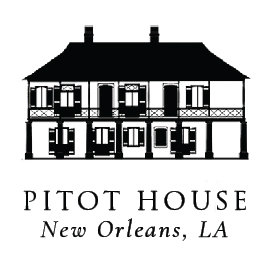"Careless of Cholera": The New Orleans Outbreak of 1848
Pavel Fedotov's painting shows a death from cholera in the mid-19th century.
In its long history, New Orleans has experienced many public health crises. The local newspapers reported extensively on the events of the winter of 1848-49.
In late December of 1848, cholera, described a century later as “America’s greatest scourge”, made a return visit to the fast-growing city of New Orleans, sixteen years after the “brief, but destructive” epidemic of 1832. This visit, which “paralyzed business and left the city in shambles” was attributed to the arrival of a passenger ship from Liverpool and Le Havre with 1000 immigrants on December 22 of 1948, despite that the first local death from cholera had been reported on December 13 of that year. This “quick but destructive” outbreak claimed the lives of 3,000 residents of New Orleans in two months.
The Times-Picayune reported relentlessly on these events, the growth of which confounded the newspaper, given its report on January 1 of 1849 that cholera “yields readily to medical treatment”. The New Orleans Weekly Delta on the same day explained the origins of the epidemic as “ traceable to bad habits, unhealthy food, insufficient clothing and inattention during the incipient stages of the disease”, the newspaper being completely unaware of poor sanitation and the water-borne bacteria Vibrio cholerae as the primary disease vector.
In the first 17 days, 739 residents given to what was reported as “irregular habits” perished from the pestilence. 67 cholera victims were buried on December 31, making for a busy New Year’s Eve for the local cemeteries, with 22 of the dead from Ireland, 6 from Germany, 3 from England, and one each from Spain, Prussia, France and Switzerland.
Despite so much loss of life, the Daily Crescent reported on January 1 that the city was eager to resume “briskness in business and gayety in amusement”. As a result, the American Theater on January 1 was “crowded to excess” by citizens who were “careless of cholera or almost ignorant of its existence”. As well, the St. Charles theater was “full and fashionable” for its performance that evening of the Taming of the Shrew.
Hart’s New Orleans Shirt Depot declared in an advertisement on January 2 that cholera was decreasing due to “Hart’s Cholera Preventive”, a remedy consisting of nothing more than wearing woolen undershirts, drawers and socks. Hart’s also offered “advice gratis” urging everyone to avoid wearing linen shirts during the epidemic, probably good advice on January 2 of any year. Taking even more credit for a cure were the purveyors of Dr. Billing’s Carmenitive and Astringent Syrup which “has never been known to fail” according to the advertisements.
The Times-Picayune took issue with the entire epidemic, editorializing that persons of “exposed life” became the victims, along with a few residents of “comfortable circumstances” who earned their fate through “neglect of the first symptoms….or imprudence during the progress of the disease”. The newspaper concluded that had the Board of Health been more forthcoming, then the city would not have had to “……. stampede the legislature….and scare our winter population out of the city and their seven senses all at once”. The newspaper’s complaint was that the board could have made more clear the fault of its victims, a declaration which would have “encouraged the temperate and warned the reckless”, instead of suggesting a “universality of distemper”. It concluded that the disease was a “mere panic-breeder” which prevented fearful “fortunate members of society” from doing “more for the succor of others”. The Times-Picayune seemed to be more chagrined by the breakdown of the traditional roles of noblesse oblige than of the tragic consequences of the epidemic.
By early February, the disease had mostly run its course. But, among many others, it was too late for Charles Yancy, a 32 year old man of “generous impulses and sound principles” who died on February 9, leaving behind a widow and orphans to lament his “reckless” decision to come to the city on business during the later stages of the outbreak.

